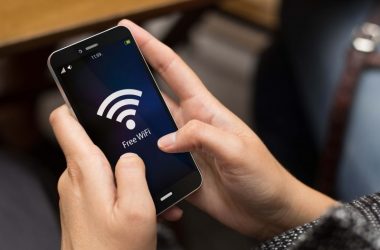 Is your phone going to be the remote control to your digital life? Paul Jacobs, CEO of Qualcomms, certainly believes so. The company he heads is firm in its conviction that mobile is also critical to the future of broadband. Qualcomm, which makes its money from licensing revenue, royalities and sales of Mobile Station Modem (MSM) chipsets, is bulling on the future of 3G, which currently has 830 million subscribers worldwide at last count. The stats tell a similar story too. 3G is expected to enable 89 percent of mobile broadband subscriptions in 2013, and is projected to be 79 percent of total handsets revenue.
Is your phone going to be the remote control to your digital life? Paul Jacobs, CEO of Qualcomms, certainly believes so. The company he heads is firm in its conviction that mobile is also critical to the future of broadband. Qualcomm, which makes its money from licensing revenue, royalities and sales of Mobile Station Modem (MSM) chipsets, is bulling on the future of 3G, which currently has 830 million subscribers worldwide at last count. The stats tell a similar story too. 3G is expected to enable 89 percent of mobile broadband subscriptions in 2013, and is projected to be 79 percent of total handsets revenue.
IT research firm Ovum is projecting that mobile broadband revenues will explode over the next five years as the number of mobile broadband users climbs to 2 billion by 2014. Ovum's latest report on mobile broadband adoption predicts that mobile broadband revenues will grow to US$137 billion in 2014, an increase of roughly 450% from their total in 2008. The major driver behind this growth will be an explosion in mobile broadband adoption, as total mobile broadband users — which Ovum defines as users of either 3G or 4G mobile data technologies — are expected to grow by over 1,000% over the next five years.
Ovum says the majority of growth in mobile data services will come from the adoption of 3G and 4G handsets, as the firm estimates that the number of mobile broadband handset users will grow from 158 million in 2008 to nearly 1.8 billion in 2014. An additional 258 million users will connect to mobile broadband services through laptops within the next five years, the firm says.
In this context, it’s little wonder then that Qualcomm believes 3G as a technology can help bridge the digital divide and can drive broadband in emerging market such as the Middle East, where the penetration of fixed broadband is still low. “There are around 560 commercial 3G operators worldwide and it can change people’s lives,” Jacobs says, citing the example of Qualcomm’s Wireless Reach initiative. It supports programmed and solutions that bring the benefits of 3G connectivity to underserved communities globally. Projects under this initiative in countries such as India, Indonesia, and Peru provide new ways for people to communicate, learn and access health care, improve the environment and reach global markets.
Getting smarter
Qualcomm's Snapdragon platform, billed as “smartbooks,” sounds like a promising new product. It's yet another variant of netbook and it has a number of features that existing netbooks lack, including GPS, all-day battery life, and an “instant on” operating system. Qualcomm claims their smartbooks feature “the portability and intuitive feel of a smartphone combined with versatility and capability of a notebook.”
Qualcomm says 15 manufacturers are developing more than 40 Snapdragon-based products, including smarter smartphones and a new category of mobile devices called smartbooks.
The first Snapdragon-powered device to reach the market is the Toshiba TG01, a slim, multimedia-focused smartphone with twice the processing power and the largest touch-sensitive display of any current smartphone.
Snapdragon QSD8250 and QSD8650 chipsets are available now, QSD8650A chipsets are scheduled for sampling before the end of 2009, and dual-CPU QSD8672 chipsets are scheduled to begin sampling shortly thereafter.
Qualcomm also makes Gobi 3G mobile data technology in laptops, already supported by major PC makers. Gobi is a dual-mode modem that supports EV-DO (Evolution-Data Optimized) Revision A and HSPA (High-Speed Packet Access), the two main 3G networks in use around the world. It also includes GPS (Global Positioning System) hardware. It is designed to help enterprise employees and other users stay connected wherever they are.
Qualcomm has also announced software that allows developers to bring mobile retailing to nearly any device on any network, offering mobile users a uniform shopping experience. Called Plaza Retail, the software is an expansion of Qualcomm's previous Plaza software suite. It will provide a component to allow mobile operators and others to create a storefront for users to make purchases.
Conceptually, a mobile carrier would be able to build and quickly update a mobile storefront for a sales promotion or other change that would be applied across all the different smartphones and mobile devices a carrier sells. The first platforms supported will be Java, BlackBerry and Brew, with Android support coming by the end of 2009 and native Symbian and Microsoft Windows Mobile coming next year.
Other components of Plaza Retail include an open marketplace for retailers, device manufacturers and publishers (often mobile carriers) to share ideas for bringing content to devices. In addition, a management center will help in providing details about pricing, packaging, promotions, placement and delivery across multiple platforms.
Back home
The Middle East, and Northern and Central Africa have been earmarked by Qualcomm as high growth markets. The region combined has large existing mobile subscriber base, totaling around 40 million. It also has a low fixed broadband penetration. Qualcomm’s initiatives in the region include building a 3G eco system and partnering with operators to define technology evolution paths, in addition to providing technical support and training. “The Sub-Saharan Africa, especially, offers huge growth opportunities because it has very low fixed and mobile penetration. It has a large youthful population and a growing economy, which makes it one of the most interesting prospects for us,” says Jing Wan, Executive VP, Qualcomm Asia Pacific and Middle East.
Qualcomm has recently collaborated with Etisalat Academy to train Etisalat engineers and managers through a series of 3G optimisation workshops. The Qualcomm-led sessions covered theoretical and practical aspects of the 3G-radio air interface procedures and protocols, as well as radio network planning. It included training on advanced wireless telecommunications technologies, including HSDPA, HSUPA and HSPA+. In another instance, Qualcomm has also helped Moroccan operator to trial EV-DO Rev B technology on a commercial network for the first time in the world.





